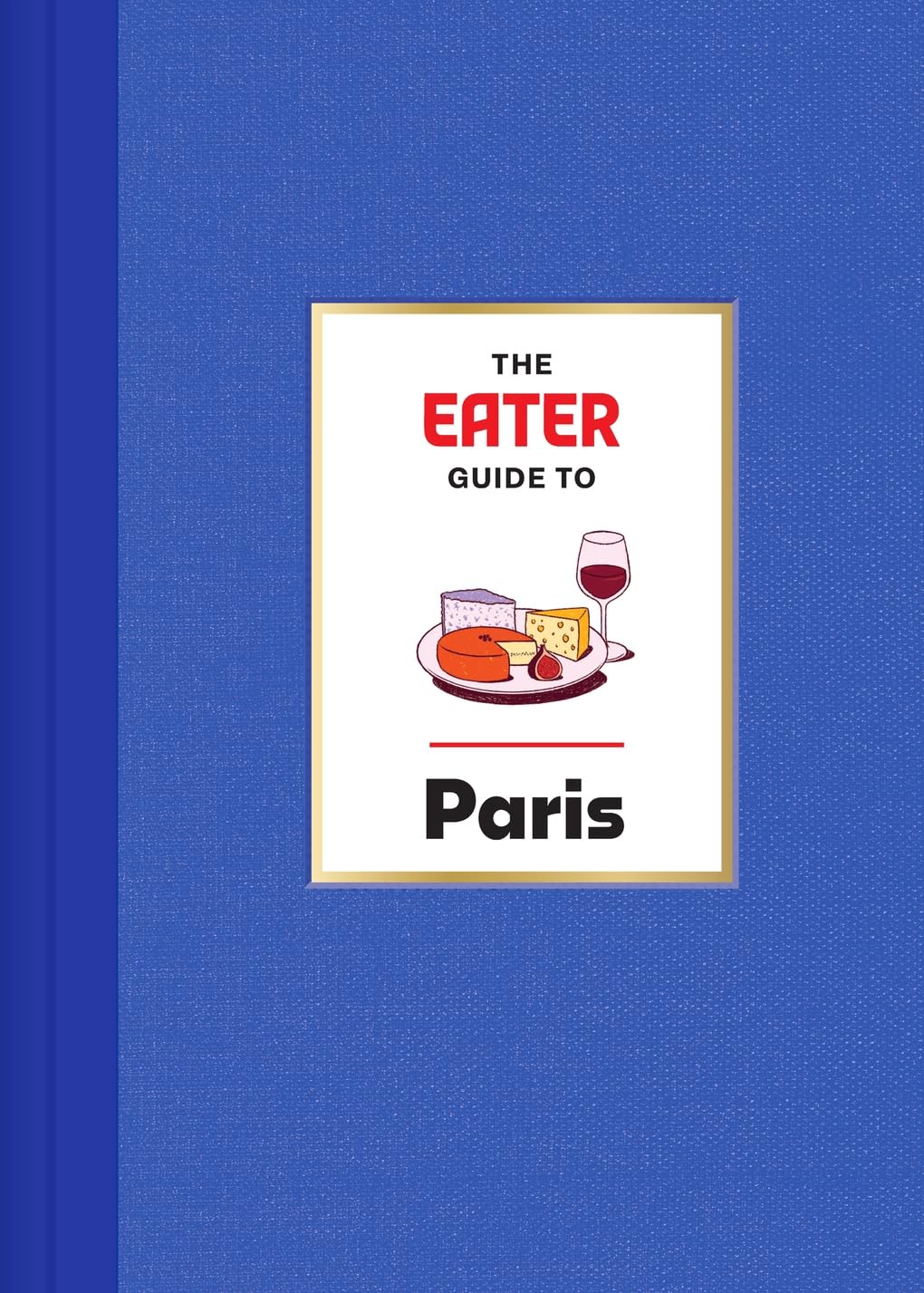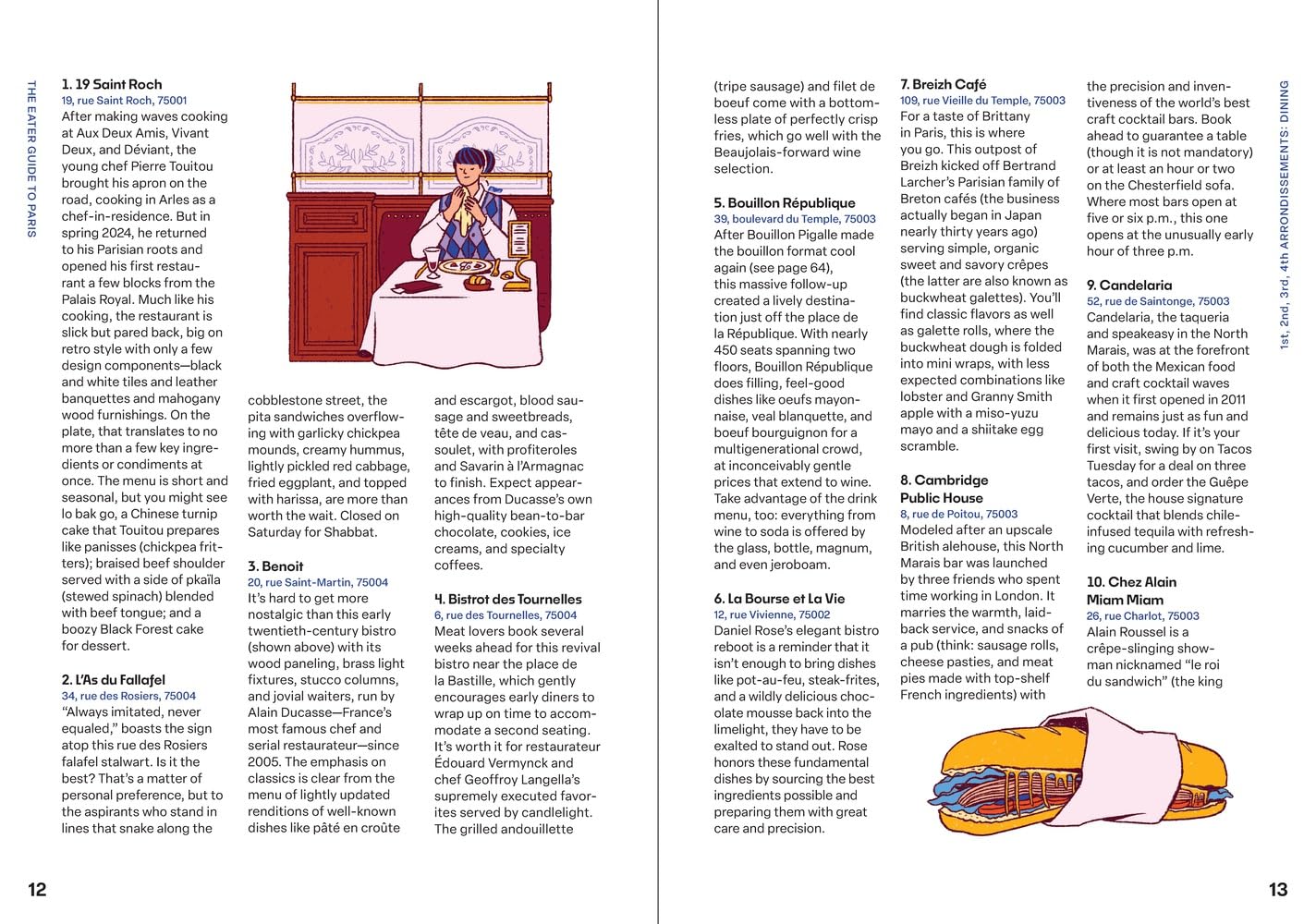Lindsey Tramuta, the American who knows the Paris food scene like the back of her hand
A journalist and author based in Paris since 2006, Lindsey Tramuta contributes to leading publications such as the New York Times, Bloomberg, and Condé Nast Traveler. Over 100,000 curious followers also keep up with her adventures on Instagram. Her latest book is a 100% culinary guide published by the highly respected American online media outlet Eater. On the occasion of the book’s release at the end of April, we spoke with her about the Paris food scene.
A journalist and author based in Paris since 2006, Lindsey Tramuta contributes to leading publications such as the New York Times, Bloomberg, and Condé Nast Traveler. Over 100,000 curious followers also keep up with her adventures on Instagram. Her latest book is a 100% culinary guide published by the highly respected American online media outlet Eater. On the occasion of the book’s release at the end of April, we spoke with her about the Paris food scene.
After The New Paris (2017) and The New Parisienne (2020), both published by Abrams Books, comes the brand-new The Eater Guide to Paris, now available in well-stocked bookstores across the United States and the United Kingdom (first print run: 7,000 copies). Spanning 200 pages, the guide captures what the Paris food scene looks like today, featuring nearly 200 spots—from newcomers to iconic institutions. Beyond Lindsey Tramuta’s personal address book, guest contributors share stories about Paris or other French destinations perfect for a weekend getaway (three-Michelin-starred chef Dominique Crenn and her wife, actress Maria Bello; American chef and star blogger David Lebovitz, who lives in the French capital; influential culinary consultant Julien Pham, among others). The guide also includes sections on the broader context of gastronomy in Paris. Yes, the restaurant was born near the Palais-Royal during the time of the Revolution, but there was already something brewing before that. “As early as the 12th century, there were already kinds of inns,” Lindsey notes. She also explores how immigration has “greatly shaped the culinary scene—first, internal migration (from Auvergne, Brittany, Provence…),” she explains, “but also international immigration—not only from former colonies but also from various parts of China and West Africa: where they settled in the city, what they brought with them… It was really about showing that you can’t talk about a simple brasserie or bistro without putting it into a historical context
Sirha Food - Could you tell us about a dish that symbolizes the Paris culinary scene in 2025?
I'm torn between kebab—yes, still kebab—and a dish by Hanz Gueco, chef and partner at the restaurant Le Cheval d’Or in the 19th arrondissement. At his place, you find the same finesse and elegance you’d expect and recognize from modern French cuisine, but also flavors from farther afield, with much more original combinations. The dish in question is a lamb pithiviers with Sichuan pepper. It was extraordinary. He’s done twists on leeks with vinaigrette, adding seaweed, ginger… This is what French cuisine looks like today. It’s an homage, but not a poorly executed fusion. I think chefs are finally much more confident. They’re not dialing down the flavors, they’re not hiding—there’s a real affirmation of identity.
SF - And coming back to the kebab—why that answer?
LT - Because there are more and more interesting kebabs. Mehmet, for instance, in the 18th arrondissement, serves natural wine or craft beer. There are also variations that are a bit more German in style in Paris, and Kurdish sandwiches as well, which are a type of kebab. I actually did a piece on it in the latest issue of Bon Appétit magazine. To me, Paris may not have the same history as Berlin (considered a true kebab capital), but it does have a story. Kebab speaks of immigration, which is powerful, and it’s also a way to show that street food isn’t necessarily low-quality. Prices are even going up sometimes.
This answer about kebab is essential because I think it’s just as important in the capital today as a Michelin-starred restaurant or a neo-bistro like Saint-Sébastien or Recoin (the new darlings of the food press). Nowadays, you can’t really define Paris as the city of bistros and brasseries, because in terms of numbers, that may no longer be entirely true. Those who still think Paris is only about the classics are mistaken—and they’re missing a big part of what makes this city so exciting.

SF – Do you have in mind a new spot that’s going to be a real game-changer for the city?
LT – There’s a place that opened about two months ago called De Vie (in the 2nd arrondissement), run by two former mixologists from Little Red Door and an incredibly talented Irish chef who previously worked in the kitchen at Frenchie. They haven’t opened the bar yet, but eventually, it will be two side-by-side spaces. Right now, the counter is open, and it’s very sophisticated in terms of non-alcoholic offerings, which are truly interesting. They don’t even use ice cubes because it’s considered wasteful: the glasses have been specially designed with a sort of built-in square in the center that cools down once chilled. As for the food, it’s a six-course menu featuring modern French cuisine, technically very refined. I still remember the white and green asparagus, sliced in half and layered with aged Comté cheese and a sauce. All of it was placed in a perfectly executed tart shell. The presentation is striking, and the dish was incredibly flavorful. For me, De Vie is both highly inventive and reassuring for those who don’t want a ‘Noma-style’ concept that strays too far from something grounded.
SF - In 2022, the Financial Times published an article about the Paris neighborhood of Belleville (and its surroundings), calling it the most exciting area in the capital in culinary terms. For you, which neighborhood is really buzzing right now?
LT - Perhaps Rue Keller and the surrounding area, in the 11th arrondissement—between the restaurant Tarántula, Giclette, Jip… I find it interesting to see that parts of the arrondissement continue to evolve. Same goes for Rue Saint-Maur, also in the 11th: for years, there were only places like Le Servan and Double Dragon, but now you also have Jolyne, a tiny wine bar that’s really lovely and warm. It’s very Parisian to cluster within the same block, like Greg Marchand or Terroirs d’Avenir did in the past. People might poke fun at this idea of not straying too far, but there’s also value in creating this kind of small village—because Paris is made up of little villages. And if some businesses shut down with the risk of being replaced by chains, it’s better to have high-quality alternatives opened by the same people, the same chefs, who at least try to preserve a spirit and a certain standard within the same area.

SF - People often say that Paris is lagging behind gastronomically compared to other major cities like London, New York, or Tokyo. What’s your take on that?
LT - There are certain things that aren’t really developed here—Thai cuisine, for example. I feel there’s a real gap there, whereas on the other hand, Vietnamese and Laotian food are excellent. That said, I do think Paris is becoming more open—it’s something people have been saying for years, but it still holds true. And in my eyes, there’s now a real ease, with chefs asserting themselves more and no longer afraid of offending with bold, spicy, or unfamiliar flavors. Now, if we’re talking about value for money, I still think Paris ranks among the best major cities in the world. What I also believe is that Paris may not be ahead of the curve on many things, but when people here finally do something, they tend to do it well—with depth and precision. Take the example of cocktails: Paris was really behind in 2007 when the Experimental Cocktail Club opened—creative cocktail bars had already been around for years in London and the U.S. But afterwards, things developed quickly, and with a lot of care and seriousness. Today, Paris is highly competitive and could easily be considered one of the best cocktail scenes in the world. I associate this situation with a deep fear of risk, which is cultural. Risk is seen as a problem here, and you learn that very young—whereas in my home country, the U.S., it’s not a big deal to fail and try again. That fear sometimes holds people back from launching things that don’t yet exist on the scene.
By Pomélo
Photo by Joann Pai